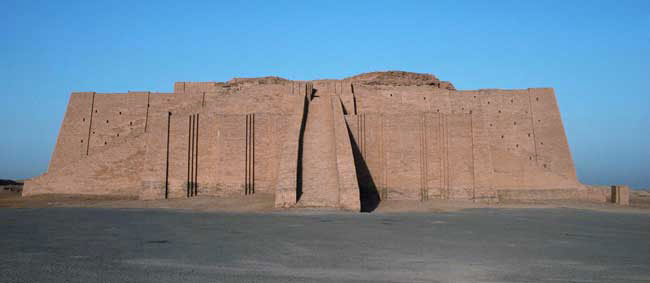Mesopotamian civilization was the product of a cross-fertilization of four distinct ethnocultural groups. The Sumerians, who arrived about 3000 BCE from central Asia, were the first to develop writing, and large social organizations. These would become the first cities of the world. Throughout the history of Mesopotamia, Semitic-speaking peoples arrived ca. 2600 BCE and the Amorites, ca. 2200 BCE. the third major cultural group to settle in Mesopotamia were the Indo-Europeans, represented by the Luvians and the Hittites. These migrations took place around 2000 BCE. Finally, the Hurrians, who were a people from the Caucasus, in Asia, began migrating to Mesopotamia around 1800 BCE. The study of ancient Mesopotamia is the study of several distinct peoples who settled the area.
The Growth of The Empire
For much of its history, Mesopotamia was a collection of independent states. Although Mesopotamia would eventually become unified, it occurred much alter than in neighboring Egypt. The early government of the towns and villages was democratic. An administrative bureaucracy was established to look after an increasingly complex society. The government built and maintained roads and canals, enforced laws, and settled disputes. As the towns grew and prospered, rivalries developed that led to intermittent wars. During times of war, many Mesopotamian villages found it necessary to appoint one of their strongest and ablest warriors to lead them to victory. The Sumerian title for king was
lugal, meaning "big man." Although the appointment was initially temporary, the frequency of wars led to the decline of democratic government and the rise of a monarchical system in which kingship was hereditary and despotic.
Sumerian Society
The Sumerians were the dominant culture in Mesopotamia between 2900 and 2400 BCE. Their society was divided into four main classes. The top class was the nobility, comprised of the king and his family, the chief priests, and the high palace officials. The king's prominent role in society was further enhanced when it was given a religious dimension. Although the king was never deified, kingship itself was believed to be one of the basic institutions of human life created by the gods. The power of the king was not derived from brute strength. It was divinely ordained. The king and other members of the nobility owned the most and best land.
Those men and women who worked for the nobility in exchange for the use of the land were known as "free clients." These people were dependent on the nobility for their livelihood and were a major portion of Sumerian society. commoners were free citizens who owned their own land and were not dependent on the nobility. Among the group were those who produced and traded a wide range of goods. Talented artisans created beautiful goldwork, ceramic bowls, and even board games. Others were involved in the day-to-day administration of the empire, making sure that the land was properly irrigated, laws were followed and enforced, and taxed were collected. The fourth group in Sumerian society was the slave population.
The Akkadians
The basic social, economic, and intellectual framework of Mesopotamia was established during the period of Sumerian domination. Despite repeated attempts to attain mastery over lower Mesopotamia, however, the Sumerians were never successful. Instead, the unification of lower Mesopotamia was accomplished by a Semitic chieftain named Sargon. After conquering the Sumerians in 2331 BCE, Sargon established his capital at Akkad, from which the Akkadians took their name. Sargon's greatest achievement was finally to unify Mesopotamia and spread Mesopotamian culture throughout the area known as the Fertile Crescent. The Fertile Crescent is a belt of rich farmland that stretches from Mesopotamia northeast to Syria and southwest to Egypt. The dynasty established by Sargon was short-lived; by 2200 BCE, the Akkadians fell to invading barbarians.
The Babylonians
Mesopotamia was eventually reunited by another Semitic people known as the Babylonians. The Babylonians used their central location to dominate trade and, eventually, establish control over all of Mesopotamia. Guiding Babylon's rise was the talented
King Hammurabi, who came to the throne ca. 1750 BCE. He established Babylon as the leading power in Mesopotamia by conquering Akkad and Assyria, gaining control of both the north and the south. The most lasting and famous element of Hammurabi's reign was his law code. This code was inscribed on a stone pillar set up in public for all to see. On the pillar, Hammurabi is depicted receiving his authority from the god Shamash. The laws of ancient Babylon were not only considered divinely inspired, but also were clearly written out to form a consistent body of laws.
Hammurabi's laws tell us much about life in ancient Mesopotamia. The punishments were designed to fit the crimes. This code was the origin of the concept of an eye for an eye and a tooth for a tooth. For example, if a son struck his father, the son's hand was cut off; if someone were to break another's bone, they would have the same bone broken. The consequences of these laws, however, differed according to rank. Members of the nobility faced much more lenient penalties, often being required only to pay a fine.
Despite the talents and efforts of Hammurabi, Mesopotamia was not to remain united for long. By 1550 BCE, the Babylonian kingdom was in decline and the unity of Mesopotamia was again crumbling.
The Assyrians
For the next seven hundred years, Mesopotamia experienced turmoil and uncertainty. The invasion of the warlike Hurrians was but one of the events that contributed to centuries of chaos. Finally, in the tenth century BCE, Assyria began to emerge as the dominant force. Led by Assurnasirpal II and drawing on the best army in the Near East, Assyria was able to reunite Mesopotamia and establish the first true empire the world had ever seen. Using boasts such as, "I built a pillar over against his city gate, and I flayed all the chief men... and I covered the pillar with their skins; some I walled up within the pillar, some I impaled upon the pillar on stakes... and I cut off the limbs of the officers," the Assyrians soon became the most feared army in the Near East. By the seventh century BCE, the Assyrians had established an empire stretching from the Persian Gulf north and west to Syria, Palestine, and Egypt.
The power of fear was insufficient to hold together the Assyrian Empire. The Assyrians overextended themselves and terrorized all that they had conquered. It was only a matter of time before the subject states rose up in revolt. The revolts began to occur in the late seventh century BCE, and by the end of the century, the collapse of the Assyrian Empire was complete. Although Babylon would later enjoy a short-lived resurgence, it too had passed its prime and was in decline. By 539 BCE, Mesopotamia had become a part of the vast Persian Empire, which stretched from the Indus River to the Mediterranean Sea.
The Persian leader Cyrus the Great replaced Assyrian rule by fear with tolerance and fairness. Differences in religion were accepted, taxed imposed on subject peoples were fair, and local officials were retained in the administration of the Persian Empire -- reporting to Persian governors called satraps. This benevolent rule brought stability to the Persian Empire, which would survive some 800 years before the Greeks under Alexander the Great conquered it.
Many would say that the greatest contribution of Mesopotamia to western civilization was the invention of writing. Writing allowed the transmission of wisdom and knowledge, the codification of laws, and the keeping of records to facilitate trade. The earliest writing we have found dates to 3500 BCE and was discovered at the ancient Mesopotamian city of Uruk.
The written language of the Mesopotamians was developed by the Sumerians and is called
cuneiform, which means "wedge-shaped." A scribe would record information by pressing a wedge-shaped stylus into a slab of soft clay. Other writing materials included stone and chisel, metal and chisel, and paint on glazed terracotta (red clay). Before the development of cuneiform script, written communication was in the form of pictograms. At this point, writing was used only for record keeping, and thus only concrete words (nouns) such as "ox," "grains," and "sheep" were needed. As society became more complex, the language evolved, enabling signs to be used to depict homonyms (words that sound the same and are spelled the same but mean different things e.g., "bow," "light") and, eventually, abstract thoughts. In time, the system of cuneiform writing spread to Persia and Egypt, and for centuries was the only international script. It was a great vehicle for the growth and spread of civilization and the exchange of ideas among cultures.
Writing: ECHOES from the Past published by McGraw-Hill Ryderson Ltd.












